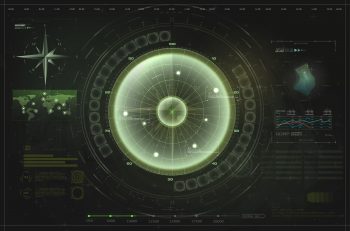
Authored By: Nancy Friedrich, Aerospace & Defense Industry Solutions – Keysight Technologies

Last month, U.S. Marine Corps pilots aboard Air Station Camp Pendleton received critical, specific training in electronic warfare (EW). According to Marines, the training enabled members of the Marine Light Attack Helicopter Squadron (HMLA) 267 to increase their familiarity with the AN/ALQ-231 Intrepid Tiger II EW pod. This training was achieved with signals intelligence specialists with Team Ronin of the 3rd Marine Aircraft Wing intelligence section. Such specialised training underscores the need for government and military personnel to understand how their systems function in the electromagnetic spectrum operations (EMSO) environment,especially in response to threats.
In today’s EMSO environment, unknown threats constantly emerge. If successful, an attack prevents an opponent from leveraging the EM spectrum to achieve their operational objectives. With accurate threat detection and analysis, your EW systems can successfully react to threats with prevailing countermeasures.
Unfortunately, the threat of your system not responding adequately always looms. Such uncertainty leads to an unacceptable level of risk in mission-critical operations. For insight into how an EW system will respond with electronic countermeasures (ECMs), you can generate threats for your system and evaluate the resulting ECM response.
A Game of Cat and Mouse
The goal of an ECM device is to deceive detection systems like radar, sonar or infrared. Aircraft, ships and even advanced tanks rely on electronic countermeasures to protect them from attack. The ECM device may perform offensive or defensive actions.
As radars advanced to evade countermeasures, ECM systems responded with new capabilities. Radars, for example, become increasingly sophisticated by continuously evolving. Once those technology capabilities are known, countermeasures undergo performance advancements to supersede them. Each time the threat or countermeasure progresses in capabilities, the other will develop past it. As the two sides compete against each other, every step in development grows increasingly complicated.
“EW systems themselves are gaining intelligence. Modern threat systems now have sophisticated software and machine learning capabilities to learn from these events to predict outcomes.”
To prevail in this environment, military and government personnel must boost their knowledge and expertise. In December, the U.S. Marines squadron was trained on the Intrepid Tiger II, which Marines describes as a precision, on-demand, external carriage EW weapon system. It is designed to provide Marine Corps aircraft with an organic, distributed, and networked EW capability that can be controlled from the cockpit or by a ground operator. With an open architecture design and rapid reprogrammability, IT II promises the flexibility and adaptability to meet current and future threats.
Given how rapidly spectrum conflicts occur, human response is often too slow at this point even with the best training. As a result, EW systems themselves are gaining intelligence. Modern threat systems now have sophisticated software and machine learning capabilities to learn from these events to predict outcomes. The tracking systems evolve in their attacks and respond to adversary countermeasures using new protocols to ensure success. As uncertainty increases in terms of what your systems may face, analysing the electronic countermeasures indicates if you will succeed using the spectrum operations that are already in place.
Keysight provides threat generation and analysis to assist you in stimulating your system under test and analyzing the ECM response to the potential threats. Find out more in our new white paper, “Detect and Analyze Electronic Countermeasures in Dense Signal Environments.”
 (0)
(0) (0)
(0)Archive
- April 2024(73)
- March 2024(112)
- February 2024(109)
- January 2024(95)
- December 2023(56)
- November 2023(86)
- October 2023(97)
- September 2023(89)
- August 2023(101)
- July 2023(104)
- June 2023(113)
- May 2023(103)
- April 2023(93)
- March 2023(129)
- February 2023(77)
- January 2023(91)
- December 2022(90)
- November 2022(125)
- October 2022(117)
- September 2022(137)
- August 2022(119)
- July 2022(99)
- June 2022(128)
- May 2022(112)
- April 2022(108)
- March 2022(121)
- February 2022(93)
- January 2022(110)
- December 2021(92)
- November 2021(107)
- October 2021(101)
- September 2021(81)
- August 2021(74)
- July 2021(78)
- June 2021(92)
- May 2021(67)
- April 2021(79)
- March 2021(79)
- February 2021(58)
- January 2021(55)
- December 2020(56)
- November 2020(59)
- October 2020(78)
- September 2020(72)
- August 2020(64)
- July 2020(71)
- June 2020(74)
- May 2020(50)
- April 2020(71)
- March 2020(71)
- February 2020(58)
- January 2020(62)
- December 2019(57)
- November 2019(64)
- October 2019(25)
- September 2019(24)
- August 2019(14)
- July 2019(23)
- June 2019(54)
- May 2019(82)
- April 2019(76)
- March 2019(71)
- February 2019(67)
- January 2019(75)
- December 2018(44)
- November 2018(47)
- October 2018(74)
- September 2018(54)
- August 2018(61)
- July 2018(72)
- June 2018(62)
- May 2018(62)
- April 2018(73)
- March 2018(76)
- February 2018(8)
- January 2018(7)
- December 2017(6)
- November 2017(8)
- October 2017(3)
- September 2017(4)
- August 2017(4)
- July 2017(2)
- June 2017(5)
- May 2017(6)
- April 2017(11)
- March 2017(8)
- February 2017(16)
- January 2017(10)
- December 2016(12)
- November 2016(20)
- October 2016(7)
- September 2016(102)
- August 2016(168)
- July 2016(141)
- June 2016(149)
- May 2016(117)
- April 2016(59)
- March 2016(85)
- February 2016(153)
- December 2015(150)